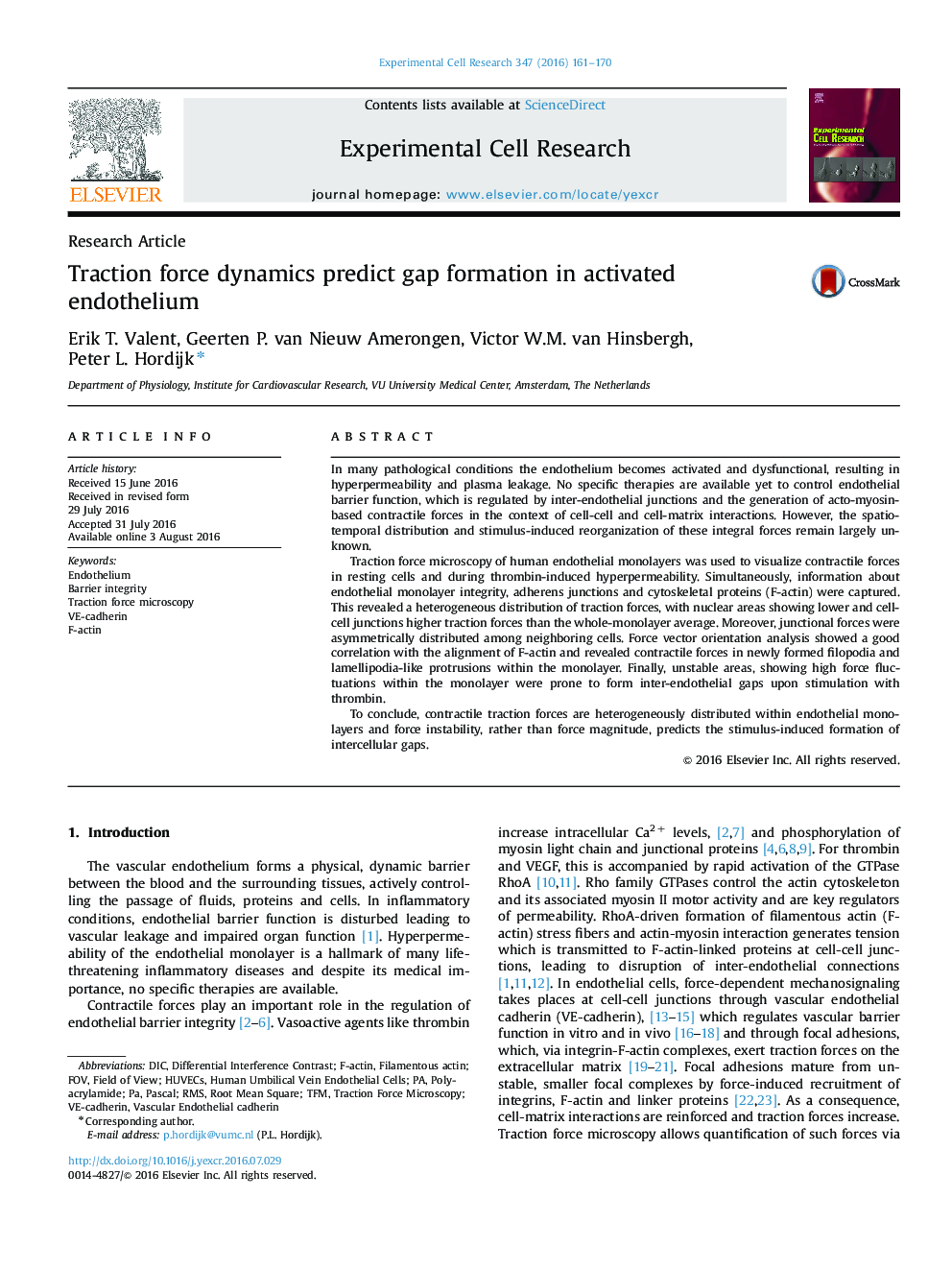| Article ID | Journal | Published Year | Pages | File Type |
|---|---|---|---|---|
| 2129895 | Experimental Cell Research | 2016 | 10 Pages |
•Endothelial monolayers exert dynamic- and heterogeneous traction forces.•High traction forces correlate with junctional areas and the F-actin cytoskeleton.•Newly formed inter-endothelial gaps are characterized by opposing traction forces.•Force stability is a key feature controlling endothelial permeability.
In many pathological conditions the endothelium becomes activated and dysfunctional, resulting in hyperpermeability and plasma leakage. No specific therapies are available yet to control endothelial barrier function, which is regulated by inter-endothelial junctions and the generation of acto-myosin-based contractile forces in the context of cell-cell and cell-matrix interactions. However, the spatiotemporal distribution and stimulus-induced reorganization of these integral forces remain largely unknown.Traction force microscopy of human endothelial monolayers was used to visualize contractile forces in resting cells and during thrombin-induced hyperpermeability. Simultaneously, information about endothelial monolayer integrity, adherens junctions and cytoskeletal proteins (F-actin) were captured. This revealed a heterogeneous distribution of traction forces, with nuclear areas showing lower and cell-cell junctions higher traction forces than the whole-monolayer average. Moreover, junctional forces were asymmetrically distributed among neighboring cells. Force vector orientation analysis showed a good correlation with the alignment of F-actin and revealed contractile forces in newly formed filopodia and lamellipodia-like protrusions within the monolayer. Finally, unstable areas, showing high force fluctuations within the monolayer were prone to form inter-endothelial gaps upon stimulation with thrombin.To conclude, contractile traction forces are heterogeneously distributed within endothelial monolayers and force instability, rather than force magnitude, predicts the stimulus-induced formation of intercellular gaps.
